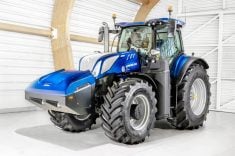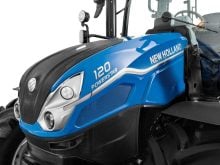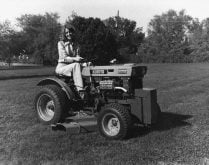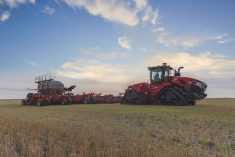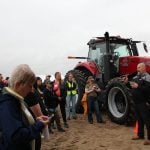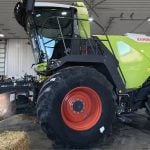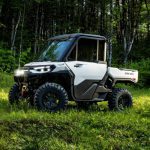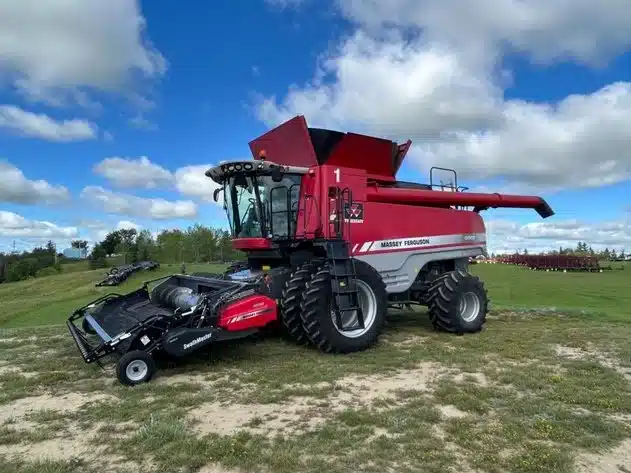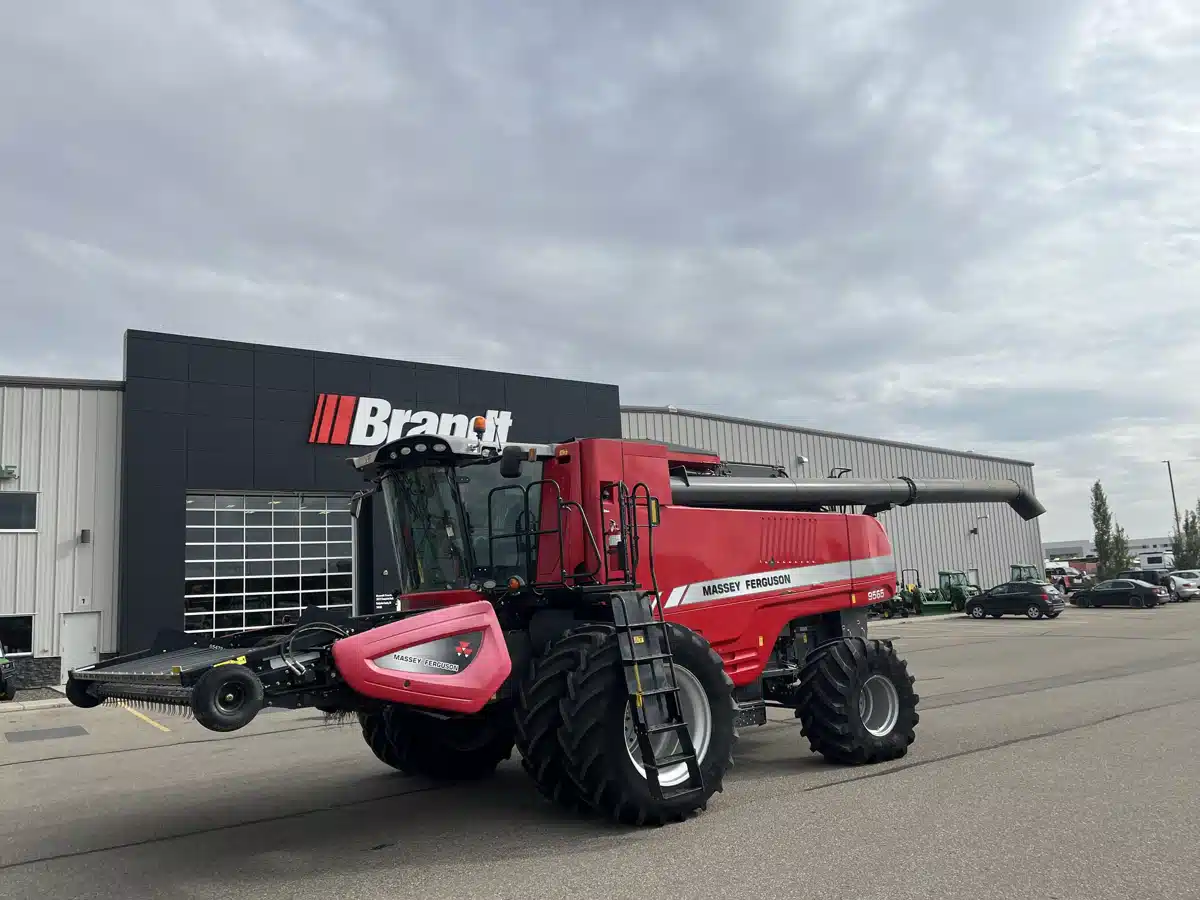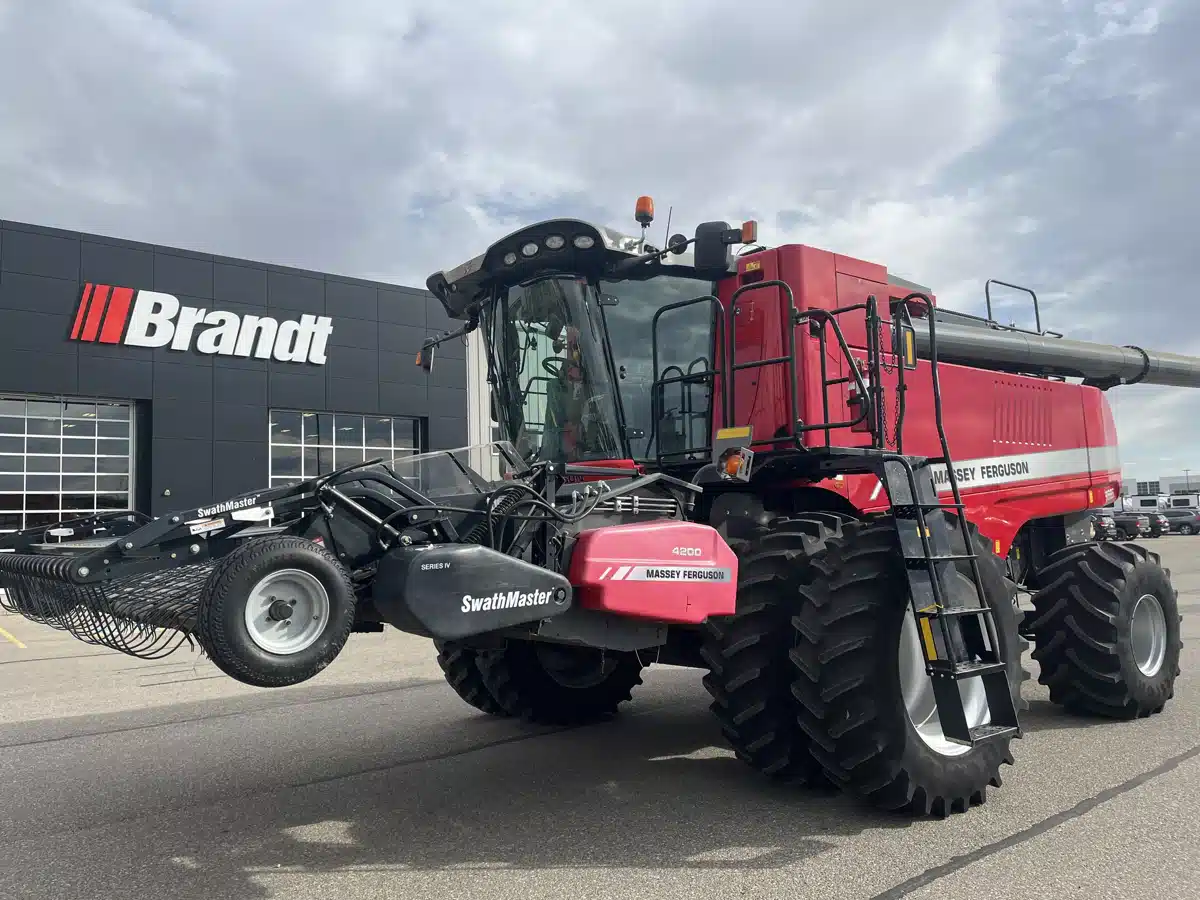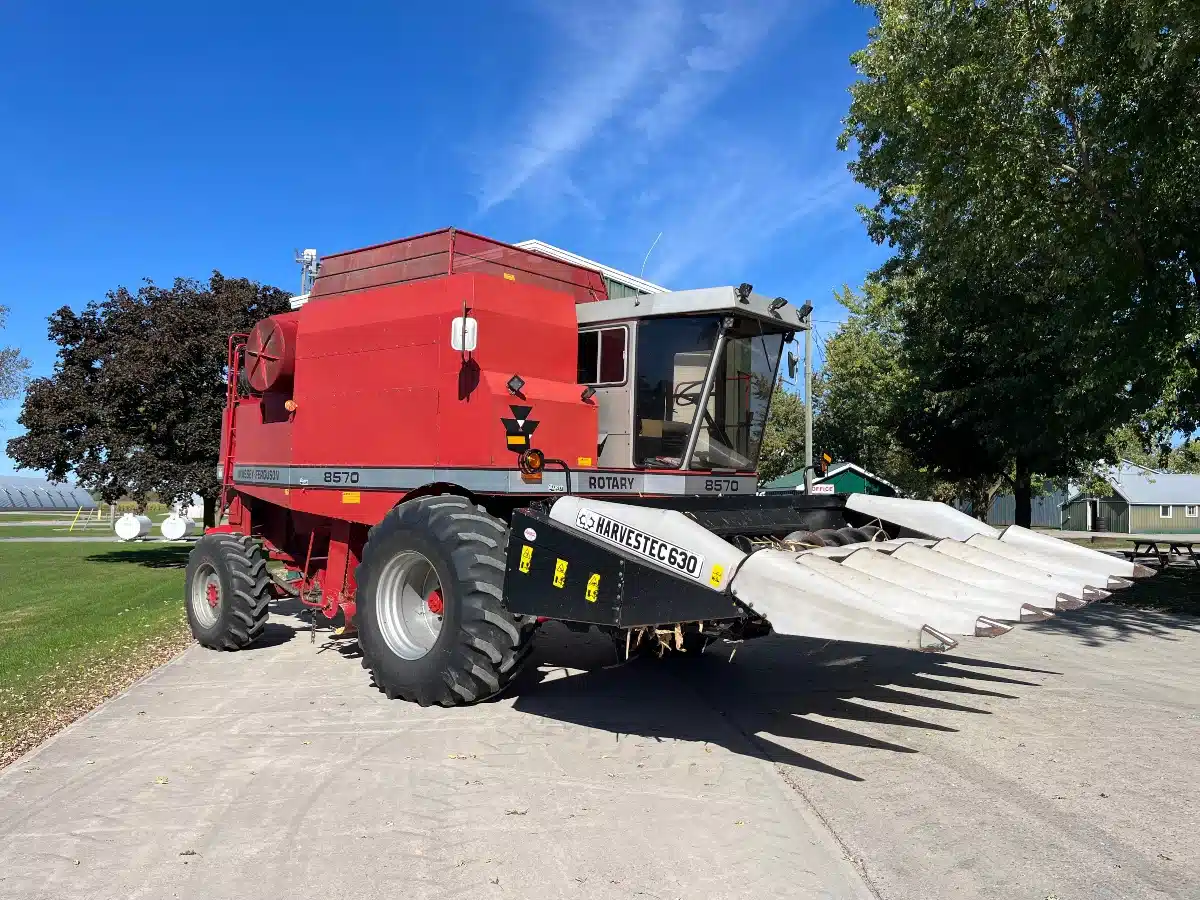Glacier FarmMedia – “Get up to date or go out of business.” That quote appeared in one of the many official press releases Massey Ferguson’s public-relations people handed out on June 9, 1964. That was the day of the grand opening for the company’s Brantford, Ont., combine plant.
After the farm machinery sector weathered tough times in North America during the 1950s, things had begun to turn around by the end of that decade. In fact, there seemed nowhere to go but up. Massey Ferguson decided the time was right for a big investment: a new combine assembly plant.
On Sept. 11, 1962, MF’s then vice-president, J.G. Staiger, sent a memo to all corporate staff announcing MF’s intention to have a combine plant up and running by January 1964.
Read Also
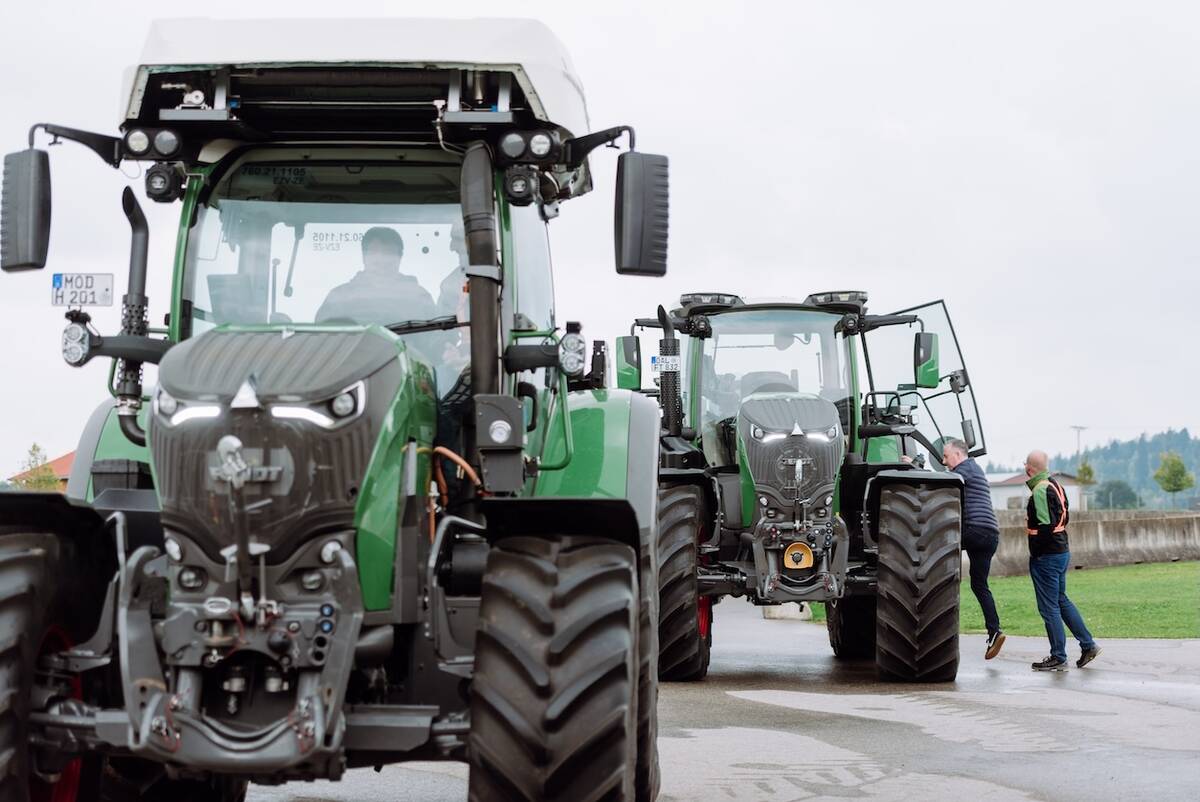
Agco worries about outlook for North America
Agco chief executive officer Eric Hansotia recently had both good and bad news to share about the demand for new farm equipment.
The official groundbreaking ceremony was held a month later, on Oct. 12, when about 150 dignitaries watched a backhoe scoop up a bucket full of Brantford soil.
But as one newspaper reporter who attended the ceremony put it, “giant earthmovers were already roaring in the background.”
For MF to justify spending $13.5 million on a plant that manufactured a single product, the company had to be assured of wide market access. Since 1944, Canada and the U.S. had a free-trade agreement in place for farm machinery. That allowed MF to ship duty free into the entire North American market from its Brantford location, and it had its sights set on exporting to Europe as well.
Developing countries were also seen as big market opportunities of the future.

Despite an extremely tight construction schedule that many people believed unrealistic, the first completed combine rolled off the assembly line on Jan.13, 1964.
MF had built a new plant that was going to build a new line of combines in a completely new way. As MF’s corporate newsletter, “View”, put it in an issue later that year, this was one of the few times in the farm equipment industry that all three items had been introduced simultaneously and successfully.
Coinciding with the Brantford plant coming on line, MF introduced a new line of combines: the 410 and 510, which incorporated cutting-edge features. Notably, they were the first combines with a unitized body design, something that hadn’t yet taken a major hold in the sports car industry.
Instead of the body built on a sturdy frame, components were designed to be strong enough to form a rigid assembly. That made a separate frame unnecessary.
The new combine design had been under development for some time. In fact, there were prototypes in fields undergoing trials as early as 1955. All that time gave engineers a chance to finish their homework on the design, which would pay dividends in sales and reputation for MF in the future.
The new 410 and 510 combines, along with model 300 combines, left the plant with a variety of engines. Straight-six, V-8 and slant-six gasoline engines, as well as Perkins diesels, could be found on the assembly line awaiting installation into the appropriate model.
To ensure a high standard of quality, each engine was dyno tested before it left the Brantford plant.
Modelling automotive efficiencies
To maximize the plant’s productivity, MF modelled it on the most modern automotive plants at the time. Combines started down a moving overhead assembly line that could shuttle 25 combines at a time. Remarkably, it took only one five horsepower electric motor to power it.
That said, when it was operating, the entire Brantford plant consumed roughly 13 per cent of all electrical demand for the entire city of Brantford.
MF was proud of its new facility and published a corporate brochure listing some of the facts about the plant. Among other things, it claimed there were five miles of fluorescent lights; and semi-automated machinery was employed in the plant wherever practical, it said.
That efficiency and automation is really what set Brantford apart from MF’s previous combine manufacturing plants.
There were industry firsts incorporated into the plant’s design, too. A unique painting system was installed on the second floor where workers painted each component after welding but before sub-assemblies were bolted together. This was a first in combine production, at least according to MF.
It greatly reduced the potential for rust to develop in unpainted segments where the components came together, a problem suffered by competitors, claimed MF publications at the time.

One other thing stood the Brantford plant apart from its contemporaries: it used an IBM computer inventory control system to track more than 3,600 part numbers and ensure an orderly flow of components to the assembly line. It was a novelty for its time, considering the home computer was still decades away.
In all, the completed Brantford building was enormous, covering 567,900 square feet under one roof, and it was positioned on a 127-acre site that had its own railway siding to ship components in and finished combines out.
At full capacity, the plant could produce about 15,000 combines per year using two shifts of workers. MF wanted Brantford to be easily adaptable to production changes, so flexibility was incorporated into the building design. It was a plant designed for the future.
With so much to be proud of, MF apparently couldn’t help but throw what was described by one newspaper reporter as “the biggest and most flamboyant plant opening in the history of the farm implement industry. I have never seen anything like it. Plant openings in the states are dull affairs compared to this.”
“The day is long past when you could open a plant with just a pair of scissors and a ribbon. Nowadays, you put the company’s public image on the line,” said one MF public relations representative when asked about the spectacle.
Clearly, MF intended to impress. To do that, the ceremony pampered visitors with a grand opening party.
And what a party it was. A reporter from the Globe and Mail newspaper likened the preparations to what was required for the D-Day invasion of the Second World War. In fact, the military were involved at the Brantford ceremony, too.
The Royal Canadian Regiment’s brass band was on hand to play for the guests – none of whom, one observer remarked, were wearing overalls. The regiment’s scarlet tunics were a nice match with all the MF red on the combine components that were waiting on the plant’s assembly line.
After the opening ceremonies, roughly 700 visitors from 11 countries walked past the stopped production line, complete with combines in various stages of assembly, to the banquet area where a feast was prepared that included lobster, salmon and beef.
In the end, the ceremony came off in spectacular fashion, with only one minor hitch. As Canada’s minister of trade and commerce was being introduced, an air hose on the nearby assembly line ruptured, making so much noise that it drowned out MF’s vice-president, J.G. Staiger, who was trying to introduce him.
A frantic scramble by MF staff had that taken care of in short order, and the speechmaking resumed.
In all, the grand opening events actually lasted a month, in one form or another. There were days devoted to employees and their families, and various groups toured the facility.
With all the pomp and pageantry out of the way, MF executives turned their attention back to the business of selling farm equipment. The following year, 1965, total MF sales in the U.S. climbed to US$225.4 million, moving the company into third place overall among the major manufacturers. At the same time, MF was working to consolidate its position in many key overseas markets.

As for the new line of combines, farmers seemed to like them as much as MF’s engineers and managers did.
Prior to the introduction of the new line up, MF’s net combine sales had been steadily declining since 1959. By the time the Brantford plant opened, revenue from combine sales had slipped nearly 17 per cent, likely due in large part to the dated models the firm had been offering.
But thanks to the new 10-series machines, net sales revenue of grain harvesting equipment in 1964 surged almost 45 per cent over levels from only two years prior, and those figures from combine sales continued to climb rapidly through to the end of the decade.
As the 1960s came to an end, MF’s overall net sales topped US$1 billion for the first time, thanks in part to the new combines.
By 1967, MF had captured 17 per cent of the North American combine market, and that number climbed to 18.6 percent by 1971. Through those years, sales of combines represented well over a quarter of all of MF’s farm machinery sales.
There seemed to be nothing but blue skies ahead for the farm machinery business, particularly for MF’s new and innovative line of combines. Its other farm machinery offerings were also doing well.
Looking back, the opening of the Brantford plant seemed to coincide with good fortune in all sectors of MF’s operations. After that first year of combine production at Brantford was over, the 1964 annual report showed income up in all sectors, and holders of common shares were enjoying the largest dividend payment in a decade.
All indications were that the Brantford plant and Massey-Ferguson would go profitably into a bright and shining future, and it did – for a while, at least.
There’s much more to the Brantford story. We’ll pick it up from here in the next article in this series.




